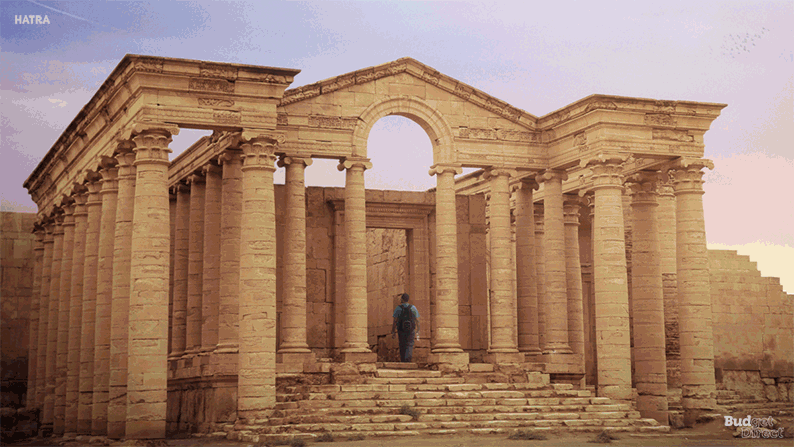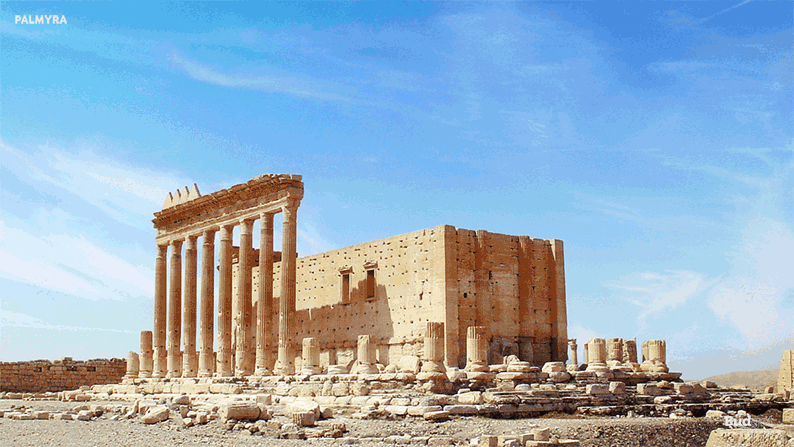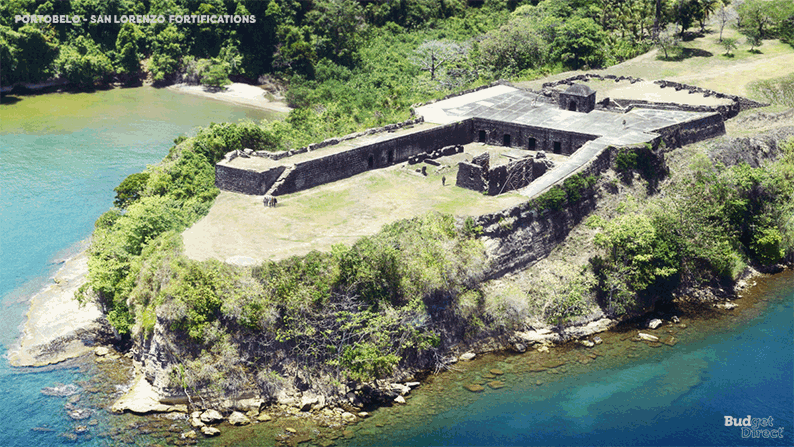Currently, there are 1,121 sites on UNESCO’s World Heritage List, 53 of which are listed as “in danger.” Reasons include natural disasters, armed conflict and war, earthquakes, uncontrolled urbanization, pollution, poaching, and unregulated tourism development, to name a few. Without strict measures, this could mean these historic sites might one day be completely destroyed, depriving us of the chance to enjoy their beauty.
Budget Direct Travel Insurance partnered with architect Jelena Popovic to create a series of digital reconstructions, offering us a rare glimpse of how some endangered World Heritage Sites looked during their golden days – from Leptis Magna in Libya to the Portobelo-San Lorenzo Fortifications in Panama. The results are mesmerizing!
1. Leptis Magna (Khoms District, Libya)

Forgotten for over 900 years, the ancient city of Leptis Magna was once considered one of the most beautiful cities of the Roman Empire. This Mediterranean city thrived under the reign of Septimius Severus, a native Roman emperor from 193 to 211. The city’s jewels include this theater.
2. Hatra (Al-Jazirah, Iraq)

Hatra was the best-preserved Parthian city – until recently. The fortress, built around the 3rd to 2nd century BCE, was protected by nearly four miles of inner and outer walls. It was the capital of the first Arab Kingdom, known as the “House of God,” for its temples honoring Greek, Aramean, Mesopotamian, and Arabian deities. The city was destroyed by invaders in the 3rd century, and its impressive ruins were not rediscovered until the 19th century. In 2015, UNESCO added Hatra to the endangered list after ISIS militants shot at walls and towers and used sledgehammers to destroy statues they deemed “signs of polytheism.”
3. Palmyra (Tadmur, Homs Governorate, Syria)

Originally a major caravan oasis for traders from Persia, China, India, and the Roman Empire, Palmyra became a focal point in 2015 when it was captured by ISIS during the Syrian Civil War. The militant group destroyed ancient monuments, carried out mass executions, and beheaded the head of Palmyra’s antiquities department when he refused to disclose the location of the city’s artifacts. Tragically, the Temple of Bel, shown here, no longer exists. In this digital reconstruction, the “before” represents what remained of the structure prior to its destruction by ISIS. Today, only a solitary arch (in the background) and part of a column remain.
4. Nan Madol (Temwen Island, Federated States of Micronesia)

Nan Madol is an abandoned city built on a lagoon featuring over 90 artificial islets and a network of canals. This partially submerged city, which thrived from 1200 to 1700, is often called the “Venice of the Pacific.” Carbon dating estimates construction began in the 12th century (around the same time as Cambodia’s Angkor Wat), though little is known about how the local Saudeleur people moved the heavy volcanic basalt stones to create the palaces, temples, and tombs of this lost water city.
5. Old City of Jerusalem and Its Walls (Jerusalem, Israel)

The Old City is a 0.35-square-mile walled area within modern Jerusalem, home to some of the world’s most significant religious sites, including the Temple Mount, Al-Aqsa Mosque, and the Church of the Holy Sepulchre. The Western Wall, made of limestone, dates back to Herod’s reconstruction of the Second Temple around 20 BCE.
6. Portobelo-San Lorenzo Fortifications (Colón Province, Cristóbal District, Panama)

Situated 50 miles apart on Panama’s Caribbean coast, the military fortifications of Portobelo and San Lorenzo have been described by UNESCO as “masterpieces of human creative genius.” Built by the Spanish Empire, these forts were part of an extensive system stretching from Cuba to Colombia, designed to protect trade routes between the Americas and Spain from the 16th to 18th centuries. The fortifications represent revolutionary military architecture of the time and were reinforced with steel to withstand attacks from raiders, privateers, and pirates.






